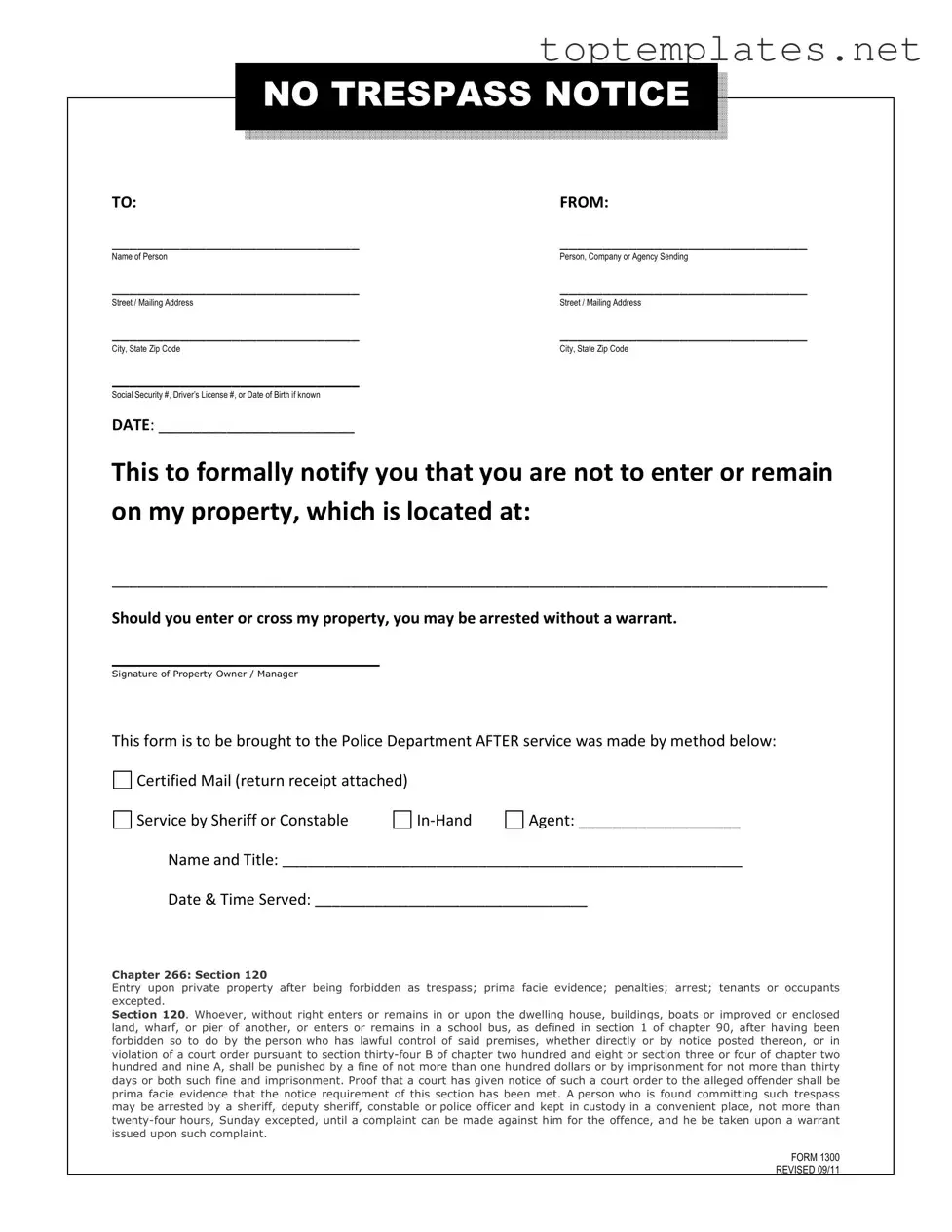What is a No Trespassing Letter and when should it be used?
A No Trespassing Letter is a legal document that formally notifies an individual or group they are not permitted to enter or remain on your property. It's often used when a property owner wants to proactively prevent someone from entering their land, perhaps due to past disputes, concerns for safety, or to protect privacy. The letter serves as a formal warning that trespassing could lead to arrest without a warrant. It’s especially helpful in situations where the potential for trespassing has been identified or has occurred previously.
How can I deliver a No Trespassing Letter, and what are the steps after sending it?
The No Trespassing Letter can be delivered in several ways, but the most common methods include certified mail with return receipt, service by Sheriff or Constable, or in-hand delivery by an agent. After the letter is served, the sender should bring the form, along with any evidence of the service method (like the return receipt for certified mail), to the local Police Department. This step ensures that the warning is officially on record and helps with enforcement should the individual trespass and require arrest.
What information is needed to complete a No Trespassing Letter?
Your No Trespassing Letter should include the names and addresses of both the sender and the recipient. It must clearly state the property from which the recipient is barred, often with a detailed description or address for clarity. The date of the letter's issuance should also be included. Finally, if the letter is being delivered by an agent, their name and title should be noted, along with the exact date and time the letter was served. This information ensures that there is no ambiguity about the intent or the legality of the request.
What are the legal consequences if someone ignores a No Trespassing Letter?
If someone ignores a No Trespassing Letter and enters or remains on the property without permission, they can be arrested without warrant. The act of trespassing after receiving a formal warning elevates the legal consequences and can lead to criminal charges. The severity of these charges varies by jurisdiction but typically includes fines, community service, or even jail time. It is crucial for property owners to follow up with local authorities if the warning is disregarded to ensure that the law is enforced.

